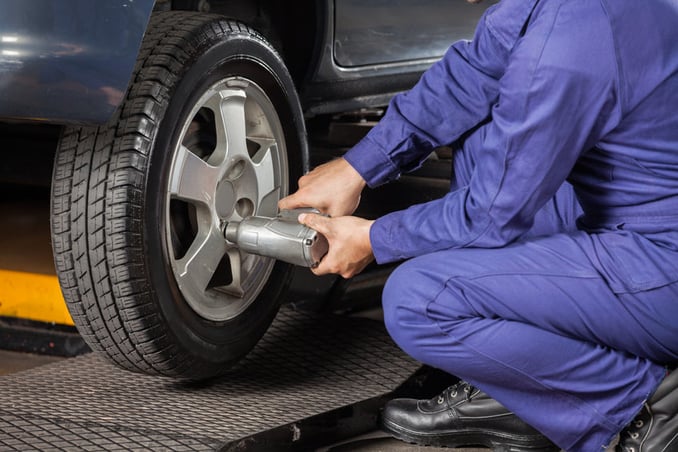Tire Solution: The Effect of Climate Condition
When it comes to making sure optimum performance and safety on the road, recognizing the effect of climate problems on tire service is crucial. GMC Tire Service. In this discussion, we will check out the detailed connection in between weather conditions and tire solution, shedding light on the value of weather-specific tire upkeep practices and considerations.
Warmth and Tire Efficiency
When exposed to heats, tires experience changes in performance that can substantially influence vehicle safety and security and handling. The heat generated from prolonged driving or hot climate conditions causes the tire rubber to soften, causing minimized tread life and increased wear. As the rubber comes to be softer, the tire's grip on the road decreases, impacting braking distances and general traction. In extreme instances, excessive warmth can also create tire blowouts, positioning an extreme safety and security risk to the car and its passengers.

Winter Effects
Winter conditions can have a substantial effect on tire efficiency and safety. As temperatures decrease, tire rubber can set, bring about lowered traction on icy or snow-covered roads. In cool weather condition, tires might additionally shed air pressure more quickly, which can influence managing and fuel effectiveness. Furthermore, cool temperatures can trigger tire sidewalls to tense, boosting the danger of damage from fractures or other roadway threats.
To alleviate the results of cool weather on tires, it is crucial to on a regular basis check tire stress and inflate them to the maker's recommended levels. Utilizing winter or all-season tires created for cold weather conditions can also boost traction and grip on icy or snowy roadways. Correct tire maintenance, including regular examinations for wear and damages, comes to be much more vital during cooler months to ensure optimum efficiency and security.
Rainy Conditions Effect
Tires with worn-out footsteps are a lot more vulnerable to hydroplaning, where a layer of water develops up between the road and the tire surface, leading to loss of traction. To fight this, vehicle drivers need to on a regular basis check their tires for sufficient walk depth and Full Report consider spending in tires especially created for wet problems.
Moreover, stormy climate can likewise decrease exposure, making it challenging for drivers to see the road in advance clearly (GMC Tire Service). In such problems, it is vital to adjust driving rates accordingly and keep a risk-free following range to enable abrupt quits. Correctly filled with air tires can additionally aid in keeping control on damp roads by giving better handling and hold
Snow and Tire Safety
Snow-covered roadways present unique difficulties for motorists, stressing the significance of correct tire option and maintenance. When driving in snowy problems, having the appropriate tires can make a considerable difference in safety and security and performance. Wintertime tires are designed with special rubber compounds and walk patterns to supply far better grip on snow and ice compared to all-season tires. The official site deeper treads and sipes of winter season tires aid grasp the roadway much better, decreasing the threat of moving and slipping.

It is essential to comply with supplier instructions when making use of and setting up tire chains to avoid damage to the tires and vehicle. By choosing the appropriate tires, maintaining appropriate inflation, and considering additional traction help like tire chains, vehicle drivers can boost their safety and security when browsing snow-covered roads.
Weather-Related Tire Maintenance
Weather-related tire upkeep includes a range of techniques aimed at guaranteeing ideal tire feature and durability in different climate situations. One essential facet of weather-related tire maintenance is tire pressure policy. Examining tire tread consistently and changing tires when tread wear gets to a certain deepness you can try these out is vital for preserving grip and security in damaging weather condition.
Verdict
In verdict, weather problems have a significant influence on tire performance and security. From warmth influencing tire pressure and wear to chilly weather lowering traction, it is essential to consider the weather condition when keeping and utilizing tires.
In this conversation, we will certainly explore the intricate connection between weather conditions and tire solution, losing light on the significance of weather-specific tire upkeep techniques and factors to consider.
